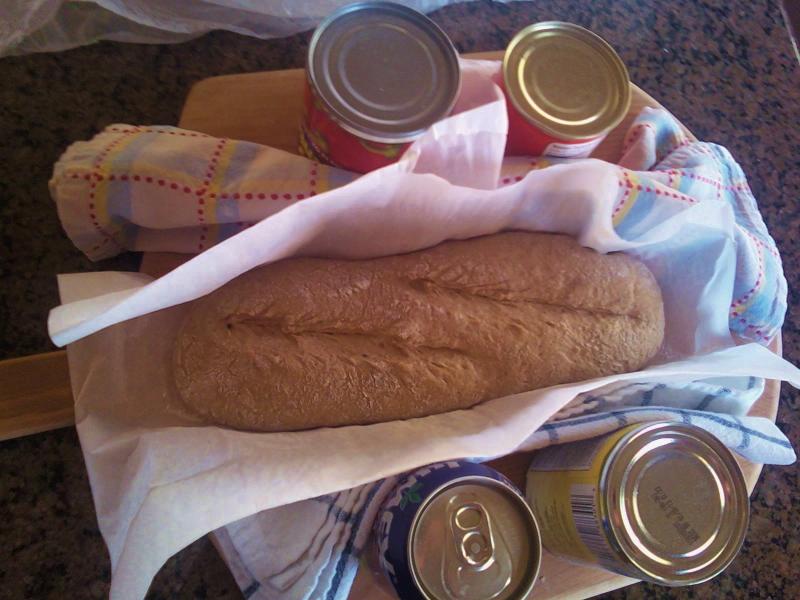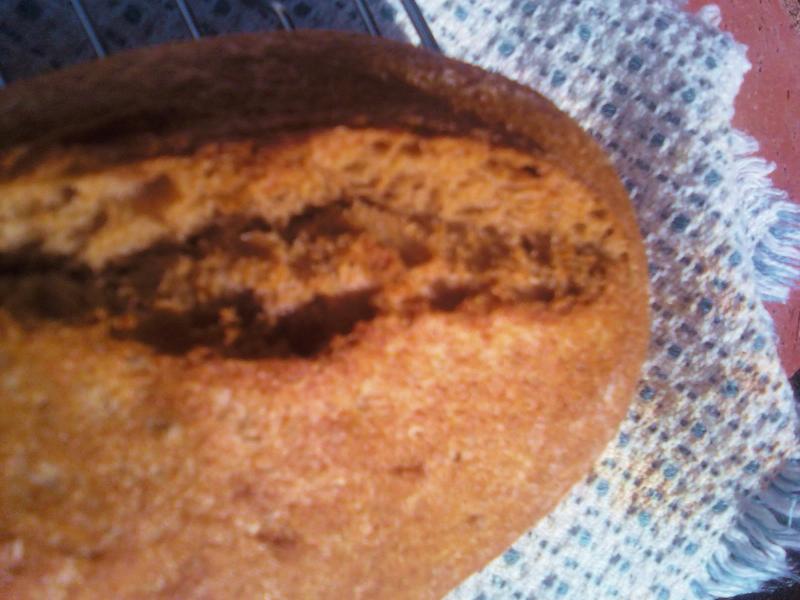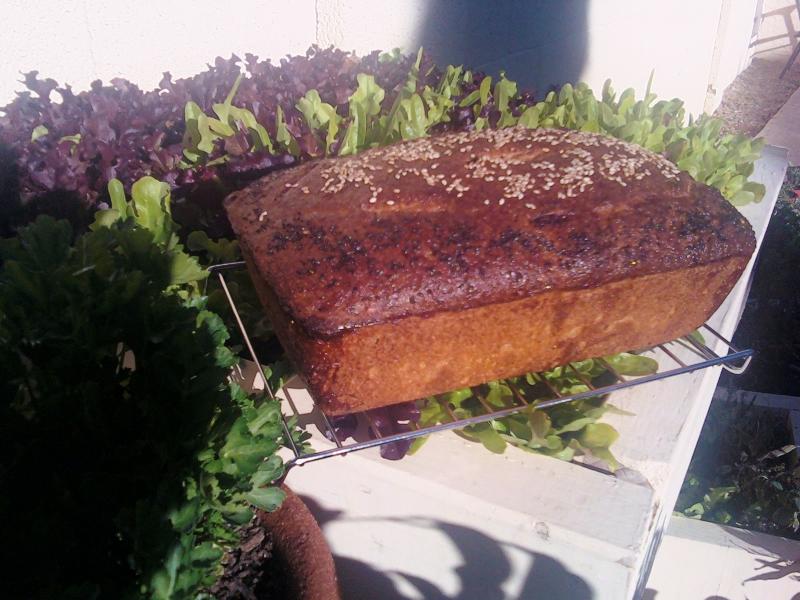 We had some left over avocados that were getting very ripe so I decided rather than throw them out I would try to incorporate them into a bread. I used 1 ripe avocado and mashed it up with a fork until it was the consistency of guacamole. I've also been wanting to try to add some yogurt into one of my breads and figured this would be a good combination with the avocado as well. Just to make it a little more interesting I decided to add some barley flakes and spelt flour.
We had some left over avocados that were getting very ripe so I decided rather than throw them out I would try to incorporate them into a bread. I used 1 ripe avocado and mashed it up with a fork until it was the consistency of guacamole. I've also been wanting to try to add some yogurt into one of my breads and figured this would be a good combination with the avocado as well. Just to make it a little more interesting I decided to add some barley flakes and spelt flour.
I must warn you that the addition of the avocado and the yogurt ended up making this a very wet dough. If you prefer you can add more flour or give this a go but be prepared to work with a sticky dough.
The final bread came out pretty good with a nice open and moist crumb and a good tangy flavor. The only issue I have is that I left the final dough to rise too long and it ended up getting deflated slightly which caused the end result to be a little flatter than it should have been. If you make this recipe and use bannetons to form your final loaves, be sure to use plenty of flour to prevent it from sticking.
Ingredients
15 ounces Refreshed Starter, 65% Hydration using All Purpose Flour
13 ounces Water (90 degrees F.)
14 ounces European Style Artisan Bread Flour (King Arthur Flour) or Bread Flour
3 ounces Whole Wheat Flour (I used KAF)
4 ounces Spelt Flour (adds a nice nuttiness to the bread--also from KAF)
1.5 ounces Barley Flakes (or rolled oats, etc.)
4 ounces Plain Greek Yogurt
4 ounces Avocado (very ripe, mashed with spoon or fork)
2.5 Tsp. Sea Salt or Table Salt
Directions
Using your stand mixer or by hand, mix the water with the starter to break up the starter.
Add the flours, salt, avocado, yogurt and barley flakes and mix on the lowest speed for 2 minutes. Let rest for 5 minutes.
Mix for 4 minutes more on medium speed, adding more flour if necessary to produce a slightly sticky ball of dough.
Remove dough to your lightly floured work surface and need for 1 minute and form into a ball. The dough will be very sticky so you may want to wet or oil your hands to help form it into a ball.
Leave uncovered for 10 minutes.
Do a stretch and fold and form into a ball again and cover with a clean moist cloth or oiled plastic wrap.
Wait another 10 minutes and do another stretch and fold. The dough should start to become easier to work with at this point. Let it rest 20 minutes this time and do another stretch and fold.
After another 10 minutes do another stretch and fold and put into a lightly oiled bowl that has enough room so the dough can double overnight.
Let it sit covered in your bowl at room temperature for 1.5 - 2 hours and then put in your refrigerator for at least 12 hours or up to 3 days.
When ready to bake the bread, let it sit out at room temperature covered for 2 hours. After 2 hours shape the dough as desired being careful not to handle the dough too roughly so you don't de-gas it.
Place it in your bowl, banneton or shape into baguettes.
Let it sit at room temperature for 2 hours covered with oiled plastic wrap or a wet cloth.
Pre-heat oven with baking stone (I use one on bottom and one on top shelf of my oven), to 500 degrees F.
Slash loaves as desired and place empty pan in bottom shelf of oven.
Pour 1 cup of very hot water into pan and place loaves into oven. I also spray the inside of the oven walls with water 2 times the first 5 minutes to add some extra steam.
Lower oven to 450 degrees and bake for 25 - 35 minutes until bread is golden brown and internal temperature reaches 200 degrees.
Let cool on cooling rack and enjoy!
This post has been submitted to the Yeast Spotting Site here: http://www.wildyeastblog.com/category/yeastspotting
Please feel free to visit my other blog for additional recipes at: www.mookielovesbread.wordpress.com
















































